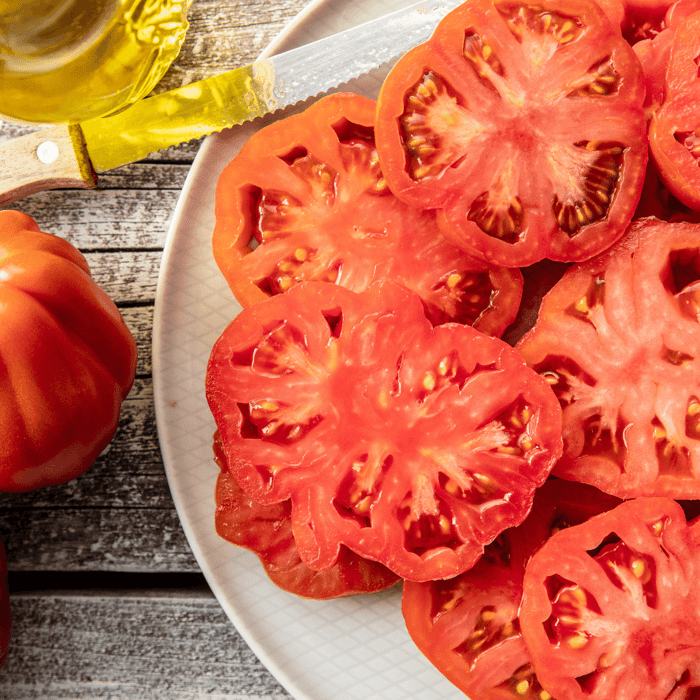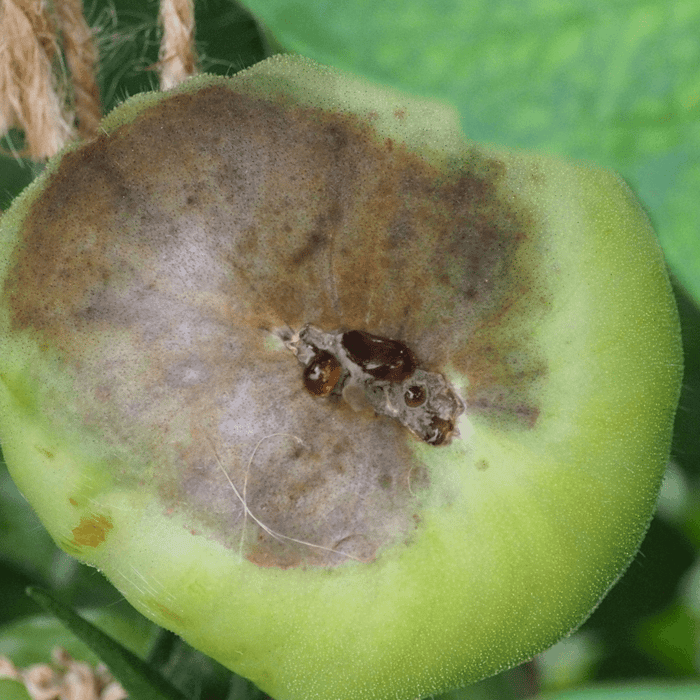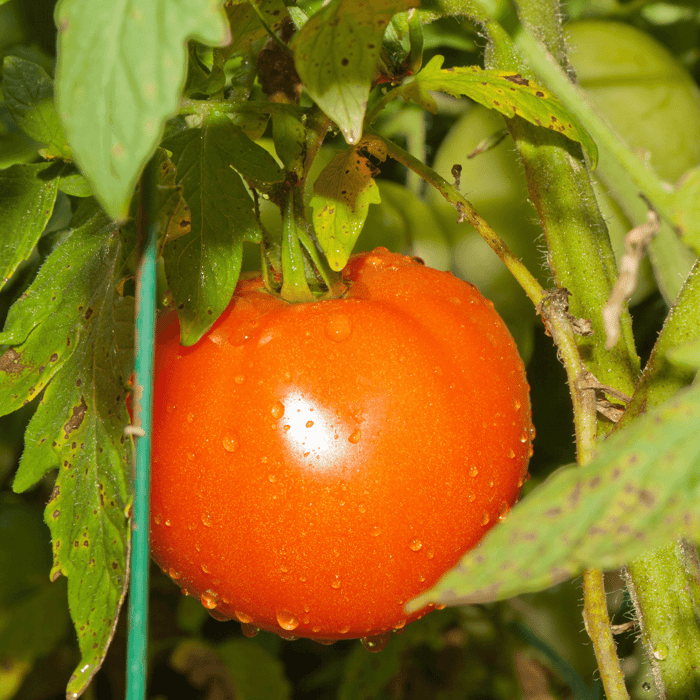Tomato blossom end rot is a common and frustrating problem for gardeners. This in-depth article will explore what causes tomato blossom end rot and provide a step-by-step guide to preventing and treating it. From soil moisture management to calcium uptake, we'll cover all the essential aspects of maintaining healthy tomato plants.
Table of Contents
- Introduction to Tomato Blossom End Rot
- The Role of Calcium in Tomato Plants
- Causes of Blossom End Rot
- Getting Your Soil Tested
- Preventing Blossom End Rot
- Treating Blossom End Rot
- Additional Tips for Healthy Tomato Plants
- Conclusion
Introduction to Tomato Blossom End Rot
Tomato blossom end rot is a physiological disorder that plagues many tomato gardeners, causing disappointment and frustration during the growing season. By understanding the causes and characteristics of this condition, you can take preventive measures and manage it more effectively.
Characteristics of Blossom End Rot
Blossom end rot affects the developing fruit of tomato plants, causing a range of symptoms that typically progress as follows:
- Initial stage: A water-soaked area appears at the fruit's blossom end (opposite the stem). This area is initially small but can quickly expand, covering a large portion of the fruit.
- Advanced stage: The affected area turns into a dark, sunken, and leathery spot. The fruit's texture becomes tough and unpalatable, rendering it unsuitable for consumption.
- Secondary infections: The damaged tissue may become susceptible to secondary infections by fungi or bacteria, further damaging the fruit and potentially spreading to other fruits on the plant.
While heirloom tomatoes are particularly susceptible to blossom end rot, the condition can affect any tomato variety, including cherry, beefsteak, and roma types.
The Role of Calcium in Blossom End Rot
Calcium is a vital nutrient for the healthy development of tomato fruits. It is essential for cell wall formation, enzyme activity, and the overall structural integrity of the fruit. When a developing tomato fruit lacks sufficient calcium, the cells at the blossom end weaken and break down, resulting in the characteristic symptoms of blossom end rot.
The primary cause of calcium deficiency in tomato fruits is often linked to inconsistent watering and soil conditions. Inadequate or fluctuating soil moisture levels can disrupt the plant's ability to take up and transport calcium to the fruit, leading to the development of blossom end rot. Other factors, such as soil pH imbalances, excessive nitrogen, and poor root development, can also contribute to this disorder.
By recognizing the signs of tomato blossom end rot and understanding the role of calcium in the development of the fruit, you can take the necessary steps to prevent and manage this condition. Maintaining consistent soil moisture, ensuring adequate calcium levels, and providing the right growing conditions for your tomato plants are crucial to minimizing the risk of blossom end rot and enjoying a healthy, bountiful harvest. The Role of Calcium in Tomato Plants
Calcium plays a crucial role in tomato plants' development and overall health. It is essential for:
- Cell wall structure and strength
- Enzyme activity and metabolism
- Nutrient uptake and transport
When there is a calcium deficiency in tomato fruits, the cells at the blossom end weaken and break down, leading to the development of blossom end rot.
Causes of Blossom End Rot
Several factors can lead to calcium deficiency and blossom end rot in tomato plants:
- Inconsistent watering: Fluctuating soil moisture levels can disrupt the plant's ability to take up calcium. Overwatering and underwatering can cause issues, as tomato plants require consistent water throughout the growing season.
- Soil pH: Calcium uptake is dependent on the soil pH. A pH level outside the optimal range of 6.0 to 6.5 can limit the availability of calcium in the soil.
- Excess nitrogen: Too much nitrogen in the soil can inhibit calcium uptake, as it promotes vegetative growth over fruit development.
- Poor root development: Damaged or underdeveloped roots can limit the plant's ability to absorb water and nutrients, including calcium.
Getting Your Soil Tested
Getting your soil tested is essential in preventing blossom end rot, as it enables you to assess your soil's pH and nutrient levels before planting. By understanding the composition of your soil, you can make the necessary amendments to create optimal growing conditions for healthy tomato plants.
Why Soil Testing Matters
A soil test provides valuable information about your soil's nutrient content, pH level, and organic matter. This information can help you identify any imbalances or deficiencies that could negatively impact your tomato plants, such as a lack of calcium, which is the primary cause of blossom end rot. Addressing these issues before planting can prevent problems and ensure a successful growing season.
Types of Soil Testing
There are several methods available for testing your soil:
-
At-home soil testing kits: These kits are widely available online and in garden centers and typically include all the necessary tools and instructions for collecting and analyzing your soil samples. At-home soil testing kits offer a convenient and affordable option for gardeners looking to understand their soil composition.
-
Laboratory soil testing: For a more comprehensive analysis, you can send your soil samples to a soil testing laboratory. These labs use advanced equipment to provide detailed information about soil nutrient levels, pH, organic matter content, and more. Many universities and agricultural extension services offer soil testing services at a reasonable cost.
How to Test Your Soil
To obtain accurate results from your soil test, it's essential to follow the proper sampling techniques:
-
Collect multiple samples: Since soil composition can vary across your garden, collect samples from several locations to get a representative sample. Use a clean trowel or soil probe to collect samples from the top 6-8 inches of soil.
-
Combine and mix the individual samples in a clean container and mix them thoroughly. Remove any rocks, roots, or debris from the mixture.
-
Prepare your sample: Depending on the soil test you're using, you may need to dry the soil, crush it into a fine powder, or follow other specific preparation instructions. Refer to the instructions provided with your soil testing kit or laboratory for guidance.
-
Analyze your sample: For at-home soil testing kits, follow the instructions included with the kit to analyze your soil sample and obtain results. If you send your sample to a laboratory, package it according to the lab's guidelines and mail it in.
-
Interpret your results: Once you have your soil test results, review the information provided to identify any nutrient deficiencies, pH imbalances, or other issues that may impact your tomato plants. Use this information to guide your soil amendments and planting decisions.
Testing your soil and making the necessary adjustments can create an ideal environment for your tomato plants and significantly reduce the risk of blossom end rot.
Preventing Blossom End Rot
To prevent blossom end rot, maintain consistent soil moisture, ensure adequate calcium levels, and provide the right growing conditions for your tomato plants. Here are some steps to follow:
- Maintain consistent soil moisture: Tomato plants need about an inch of water per week from rainfall or irrigation. Use a soaker hose or drip irrigation system to water the plants at the soil level, avoiding wetting the foliage. This helps retain moisture and reduces the risk of diseases.
- Mulch your plants: Adding a layer of organic mulch around the base of your tomato plants will help retain moisture and regulate soil temperature. This can also prevent soil-borne diseases and discourage weed growth.
- Ensure adequate calcium levels: Amend your soil with a calcium-rich source, such as lime or gypsum, based on your soil test results. You can also add crushed eggshells to the planting hole to provide a slow-release source of calcium.
- Maintain optimal soil pH: Aim for a pH between 6.0 and 6.5, as this range promotes calcium uptake. If your soil test shows that your pH is outside this range, make the necessary adjustments using lime or sulfur.
- Avoid excessive nitrogen: Use a balanced fertilizer, and avoid over-fertilizing with nitrogen-rich products. Excessive nitrogen can inhibit calcium uptake and promote vegetative growth at the expense of fruit development.
- Plant in well-drained soil: Ensure your planting site has well-draining soil to prevent waterlogged conditions, which can hinder calcium uptake.
- Proper root development: Be gentle when transplanting tomato seedlings to avoid damaging the roots. Choose a planting site with adequate space for root growth, and avoid planting tomatoes in the same location year after year to prevent soil-borne diseases.
Treating Blossom End Rot
If you notice blossom end rot on your tomato fruits, it's important to take action quickly to address the issue. Here are some steps you can take to treat the problem:
- Remove affected fruits: Pick and discard any fruits with blossom end rot to prevent the condition from spreading to other fruits on the plant.
- Check your watering practices: Ensure that you provide consistent water to your tomato plants, and adjust your watering schedule if needed.
- Apply a calcium spray: You can use a foliar calcium spray to give your plants a quick calcium boost. Follow the product instructions for the proper application rate and frequency.
- Adjust soil pH: If your soil test indicates that your pH is outside the optimal range, make the necessary adjustments using lime or sulfur to improve calcium uptake.
Additional Tips for Healthy Tomato Plants
To further ensure the health and productivity of your tomato plants, consider the following tips:
- Choose disease-resistant varieties when possible, as they are less susceptible to plant disorders, including blossom end rot.
- Rotate your tomato plants to different locations yearly to minimize the risk of soil-borne diseases.
- Regularly inspect your plants for signs of pests or diseases, and take prompt action to address any issues.
- Support your tomato plants using cages, stakes, or trellises to reduce disease risk and promote healthy growth.
 Frequently Asked Questions - What Causes Tomato Blossom End Rot
Frequently Asked Questions - What Causes Tomato Blossom End Rot
Q: Can tomato blossom end rot be cured once it has developed on a fruit?
A: Once a tomato fruit has developed blossom end rot, it cannot be reversed. However, you can prevent the condition from affecting the rest of the fruits on the plant by adjusting your watering practices, applying a calcium spray, and ensuring proper soil conditions.
Q: Will fruits with blossom end rot still ripen?
A: Fruits with blossom end rot may still ripen, but the affected area will remain damaged and could become susceptible to secondary infections or decay. Removing and discarding fruits with blossom end rot is best to prevent further issues.
Q: Are certain tomato varieties more prone to blossom end rot than others?
A: Heirloom tomatoes are generally more susceptible to blossom end rot than hybrid varieties. However, any tomato variety can be affected by this condition if the proper growing conditions are not met.
Q: Can other plants be affected by blossom end rot?
A: Yes, other plants, such as peppers, eggplants, and watermelons, can also be affected by blossom end rot. These plants' prevention and treatment methods are similar to those for tomatoes.
Q: Can I still use eggshells as a calcium source if I don't have access to lime or gypsum?
A: Yes, crushed eggshells can be an effective slow-release source of calcium for your plants. Rinse and dry the eggshells, then crush them into small pieces and mix them into the soil around the base of your tomato plants or add them to the planting hole when transplanting seedlings. The problem is it can take a long time for the calcium in egg shells to be made available to plants.
Q: How can I prevent overwatering and underwatering of my tomato plants?
A: To maintain consistent soil moisture, use a soaker hose or drip irrigation system to water your tomato plants at the soil level. Monitor the soil moisture with your fingers; it should be consistently moist but not waterlogged. Additionally, you can use a moisture meter to measure the soil moisture level and adjust your watering schedule accordingly.
Q: Is it necessary to rotate tomato plants each year?
A: Rotating tomato plants to different locations in your garden each year is a good practice, as it helps prevent the buildup of soil-borne diseases and pests. Following a 3- to 4-year rotation schedule is recommended for optimal plant health.
Q: Can I use Epsom salt to prevent blossom end rot?
A: Epsom salt is a source of magnesium, not calcium. While magnesium is essential for overall plant health, it does not directly address the calcium deficiency that causes blossom end rot. Focus on maintaining proper calcium levels, consistent soil moisture, and optimal growing conditions to prevent blossom end rot.
Q: How do I know if my tomato plants get enough calcium?
A: Regular soil testing is the best way to determine if your plants receive adequate calcium. If your soil test results indicate a calcium deficiency, amend the soil with a calcium-rich source like lime, gypsum, or crushed eggshells. Proper watering practices and maintaining optimal soil pH will also help ensure your plants can take the necessary calcium.
Q: Can blossomed end rot cause tomatoes to drop fruit?
A: Blossom end rot can make tomato plants drop fruit.
Conclusion
Tomato blossom end rot can be a disheartening issue for gardeners, but with proper prevention and treatment, you can minimize its impact on your tomato harvest. You can enjoy a bountiful and healthy tomato crop by maintaining consistent soil moisture, ensuring adequate calcium levels, and providing the right growing conditions for your plants.







